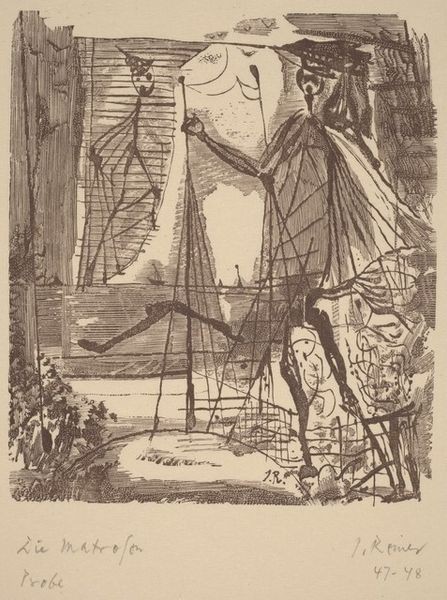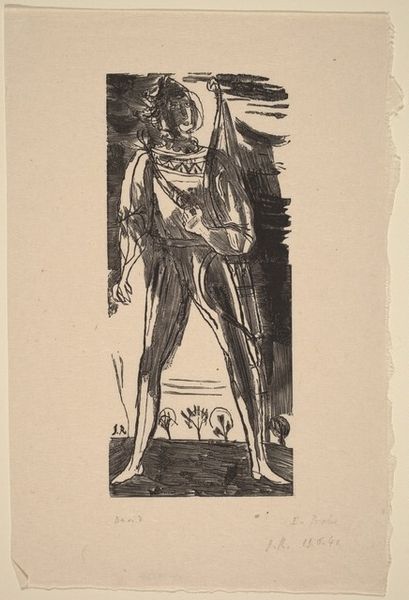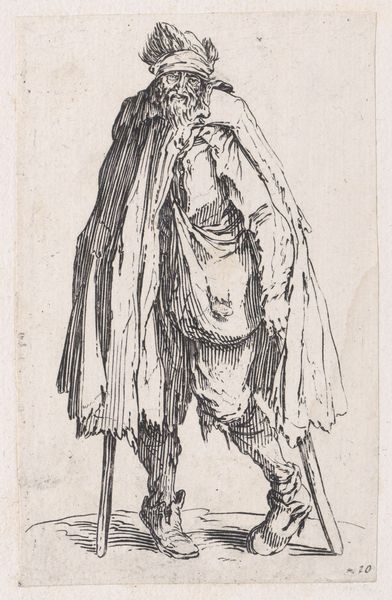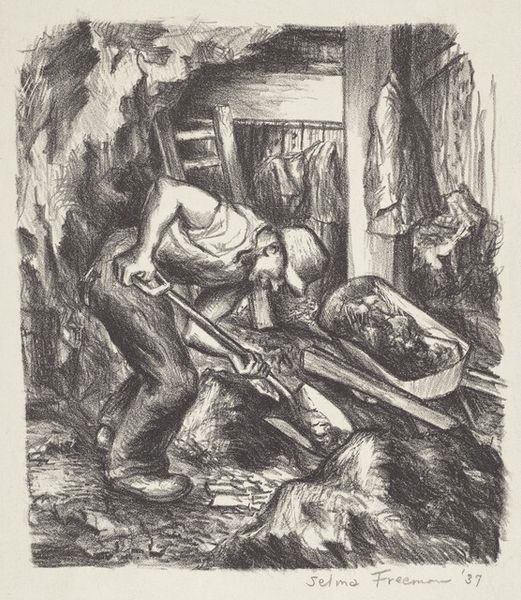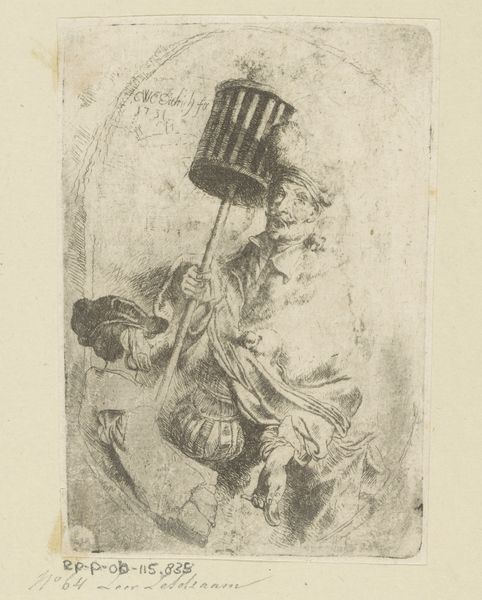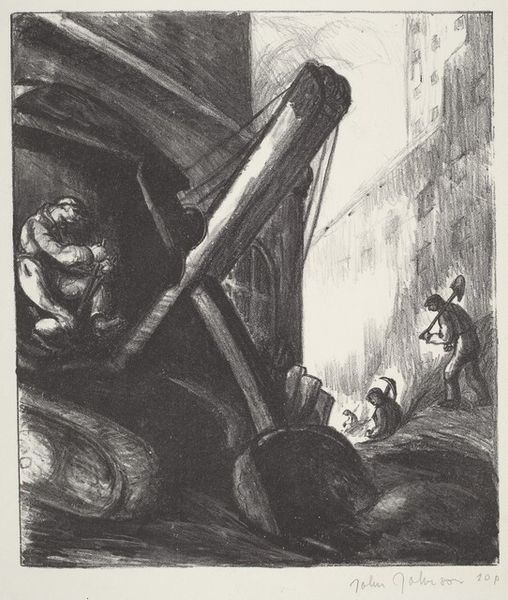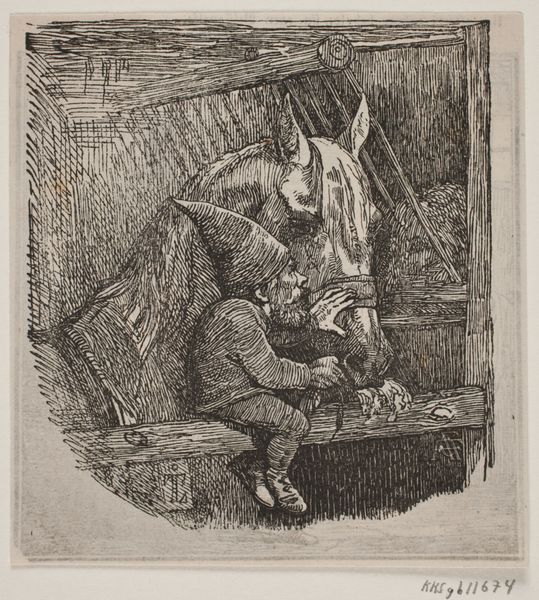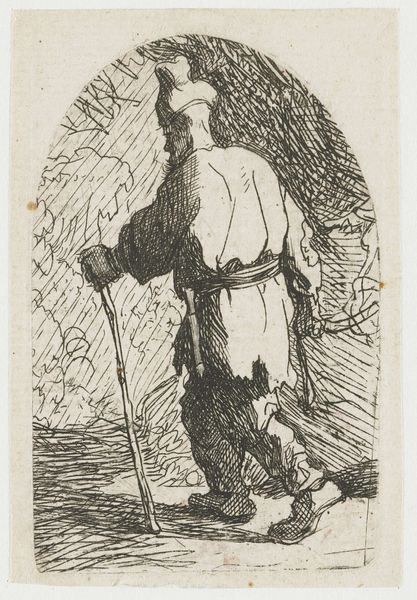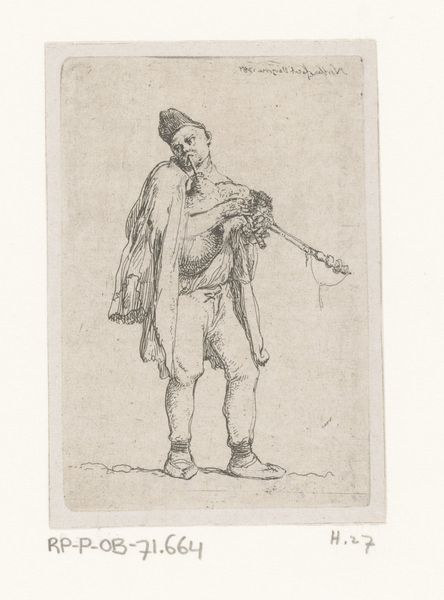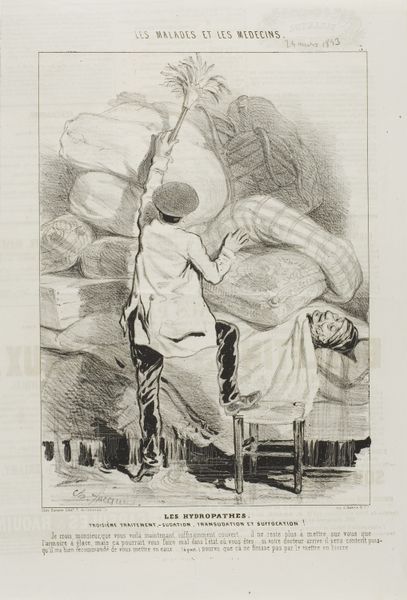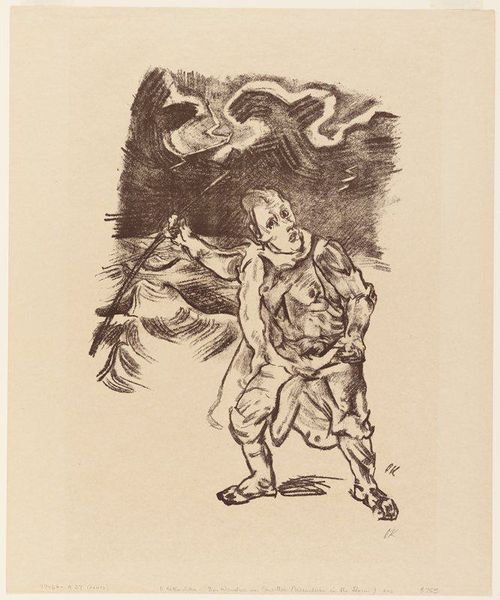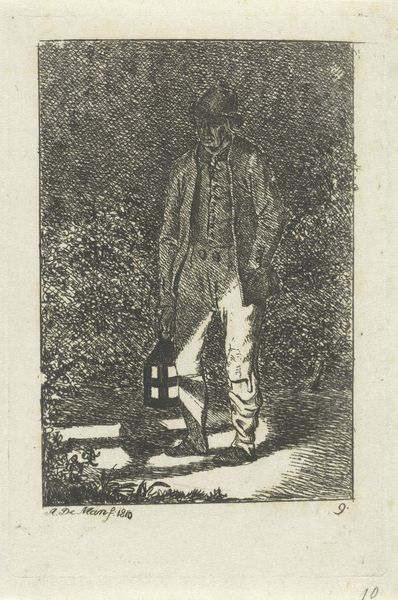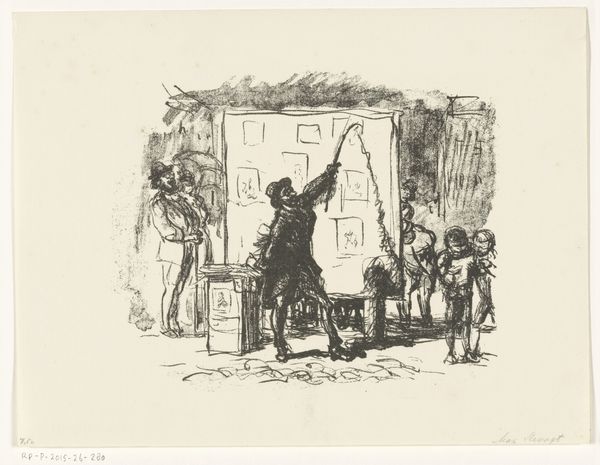
drawing, print, ink
#
drawing
#
light pencil work
#
quirky sketch
# print
#
caricature
#
old engraving style
#
personal sketchbook
#
ink
#
idea generation sketch
#
sketchwork
#
pen-ink sketch
#
sketchbook drawing
#
genre-painting
#
storyboard and sketchbook work
#
sketchbook art
#
realism
Dimensions: height 275 mm, width 215 mm
Copyright: Rijks Museum: Open Domain
Editor: This print, created by Johan Michaël Schmidt Crans in 1861, is titled "Spotprent over de watersnood, 1861." It looks like ink on paper, with a sketch-like quality. There's a central figure with water pouring from vessels, but the "First Chamber" indication is confusing me a little bit. How do you interpret this work? Curator: From a formalist perspective, I’m drawn to the stark contrast between the finely rendered figure and the looser, almost frantic, linework representing the water. Notice how the artist uses hatching and cross-hatching to create depth and volume, especially in the figure's torso and legs. The dynamism is palpable. Do you see how the diagonal lines, created through hatching on the lower left, emphasize recession and movement? Editor: Yes, I see what you mean. The hatching creates a kind of energy that contrasts with the solid forms. It gives it a feeling of instability. Is that connected to what's going on with the "First Chamber"? Curator: Precisely! Without considering the historical or social meaning of this caricature, the internal structure of the image alone tells us about imbalances: the meticulous against chaotic, figure against setting. The strategic placement of the text “1st Kamer” in the upper left-hand corner, carefully boxed in by linework, creates an interplay between language and image and introduces semiotic tension within the structure. Editor: So, you're saying the formal elements are designed to underscore a specific interpretation. I’m beginning to grasp the layering of visual language here. Thank you for bringing this out. Curator: Indeed. It's through the manipulation of form and the introduction of text, its visual equivalent, that the work establishes meaning and facilitates communication. It underlines how form precedes function.
Comments
No comments
Be the first to comment and join the conversation on the ultimate creative platform.
